If you follow me on social media, you may have seen a tribute post for the Bubbles of Hope members. I thought it would only be fair to give them a shout out on this blog too.
The group had its very first cleanup on the 2nd April 2022. The goal was to get out once or twice a month, but I quickly realised it wouldn’t be as easy. First I had to find young divers eager to join to help me make a difference. To find them I started scouting in my class by simply asking, and extended it to my whole school with a poster set up in the hall and later distributed by the teachers to the targeted year groups. A letter published in our weekly newsletter was also shared in hope to reach both students and parents. As I had joined several reef cleanups myself where I was the only minor, I really wanted this group to be made up of teens only, from 10 to 17 years. Little by little some students accepted to be part of Bubbles of hope, making it official by purchasing the t-shirt with the logo I had designed.
Today, Bubbles of Hope has 11 members, from 11 to 16 years. Mostly – but not only – from my school. I knew one of them from outside school, and I was very happy to receive a request from a homeschooled teen girl traveling around the world, currently based in KK. She had come across a post about this group and was eager to join! Did I mention I also have four pairs of siblings which is absolutely awesome; not to forget two sisters who have since then moved overseas but regularly come back and make a point to do a reef cleanup with us.

Unfortunately gathering everyone on the same day happened to be quite tricky. Young people are definitely busy during the weekends, despite what people might think. Tuition, classes, family plans… We still haven’t had a chance to be all together at once. But with a bit of luck and eagerness we did manage to achieve 12 cleanups in 17 months and I couldn’t be more grateful for that. I also wanted to highlight one of my IG followers, a fellow young diver from England who messaged me that she was very inspired by our group. She decided to do some cleanup herself in the nearest park to her house with a friend and sent me the video, since diving is not as accessible for her as it is for us. I couldn’t be more happy to know our group can reach youth literally across the world who are inspired enough to do their part. The saying do good and good things will come back is very true in our case. What better reward than bumping into a turtle, some shy reef shark or even a whaleshark like we did at the beginning of this year!
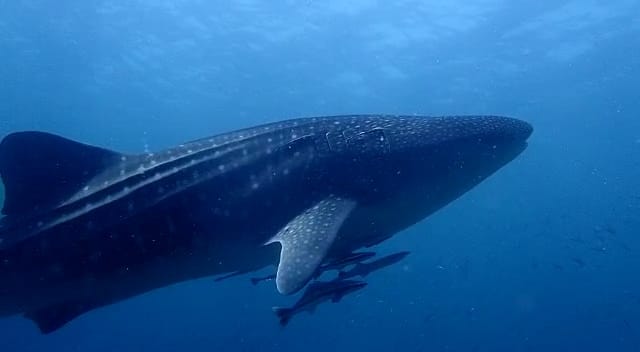
Glad to announce we have two new members ready to join. I said it before but I can say it again: Bubbles of Hope is constantly looking for young divers to join us. Thanks to Scuba Junkie Kota Kinabalu we have a boat, a captain and divemasters ready to support us. I hope more youth will be onboard in the future. I know this project might feel like a drop in a huge ocean but I believe anything is better than nothing – and I definitely hope that this will create a continued wave of change in each of our members’ lives. We are very lucky to live in a place where the temperature above and underwater are really tropical all year long; the marine park is 10-15 minutes away. I know how lucky we are and I believe it would be a shame not to give back to the environment with these idyllic conditions. Each piece of trash/plastic removed makes it feel better and gives us a purpose as young divers.
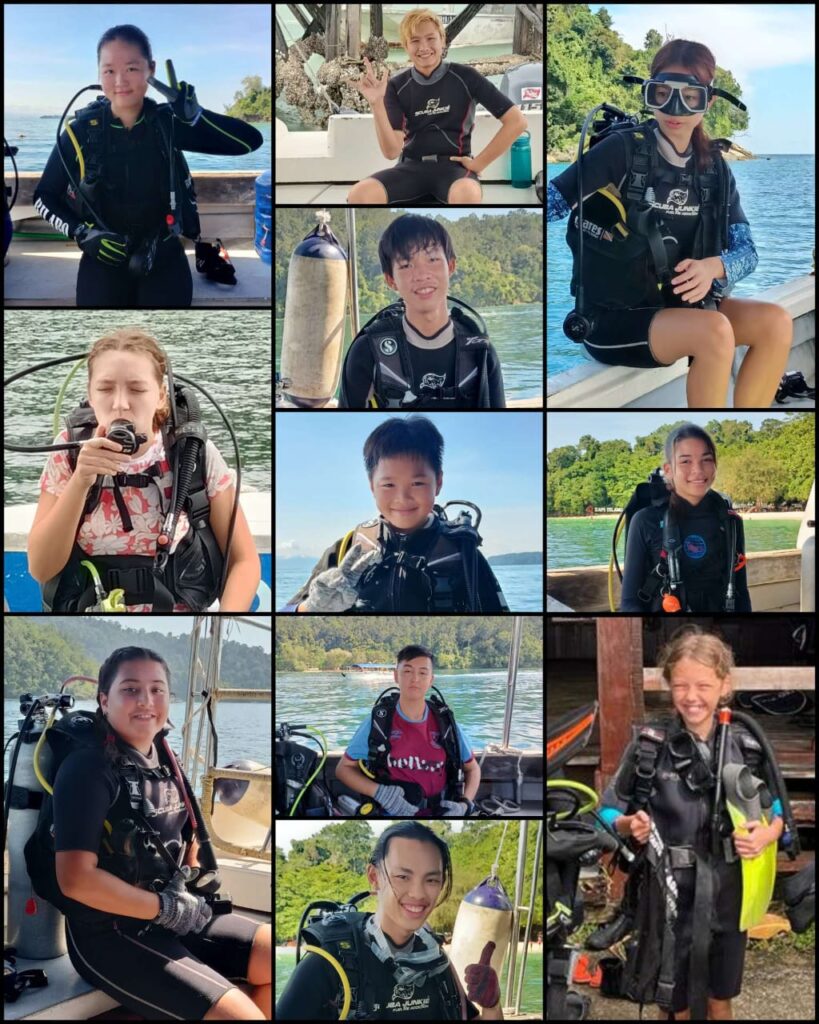
As always, looking forward to the next time I can meet up with my cleanup gang and we can not only make a difference, but have a blast while doing so. Julia
Saturday 16th September was both Malaysia Day and International Coastal Cleanup Day. A good excuse for Bubbles of Hope to go out again and enjoy the beauty of our Sabahan underwater world while chasing any trash that is polluting it. After all, even if ‘coastal’ refers to the border next to the sea, we have to remember that pollution has no such boundaries and eventually ends up deeper in the ocean.
Five of us boarded one of Scuba Junkie’s boats with Jason and Alex, our two DMs for the day. With optimal conditions – water temperature 30°C and visibility up to 15 meters we were in for a great day, ready to do our part, and have fun!
Very happy to report our first dive site was clear of trash! After 45 minutes of trash hunting, we came back with empty mesh bags except for one plastic bottle. The kind of failure that feels like a victory. Pik Yen and Isabella even found time to play rock, paper, scissors to celebrate during our safety stop 😉
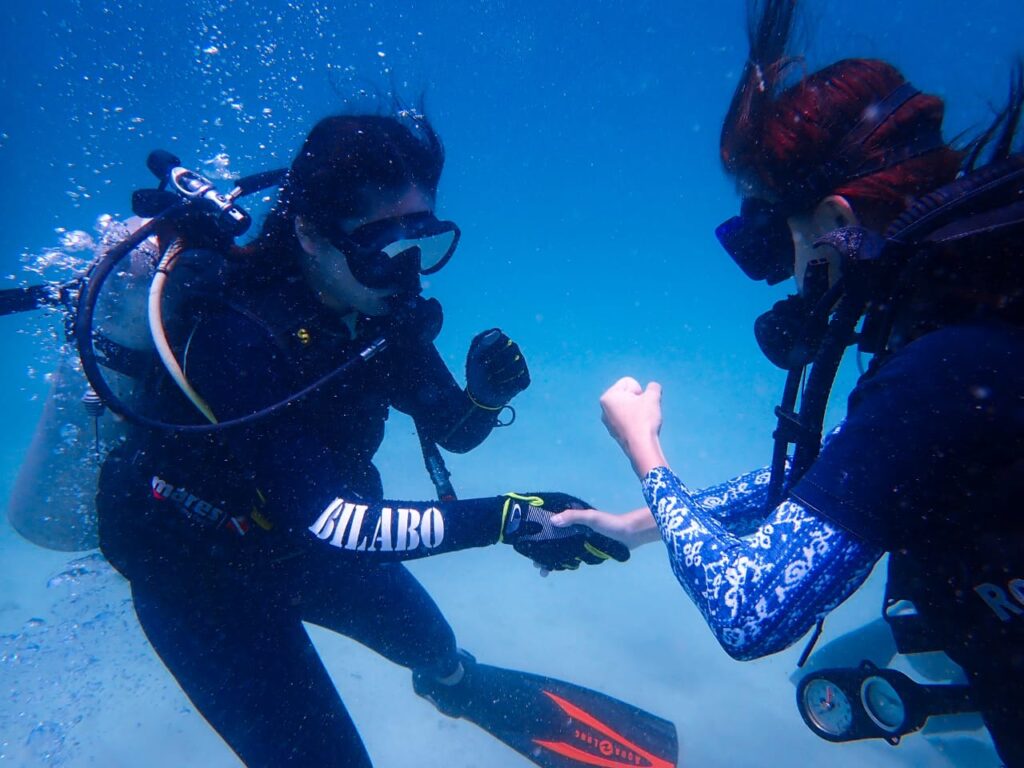
A quick snack and then onto a small cove of white sand that looked empty from afar. But behind the big tree roots lots of plastic bottles, packaging and diapers were there, ready to stay for the next hundreds of years. When plastic takes over nature, nobody wins. We removed 3 big trash bags before it was time to head out again.
After the second dive – no trash either – and lunch, we decided to use our free time on the beach to have some fun.
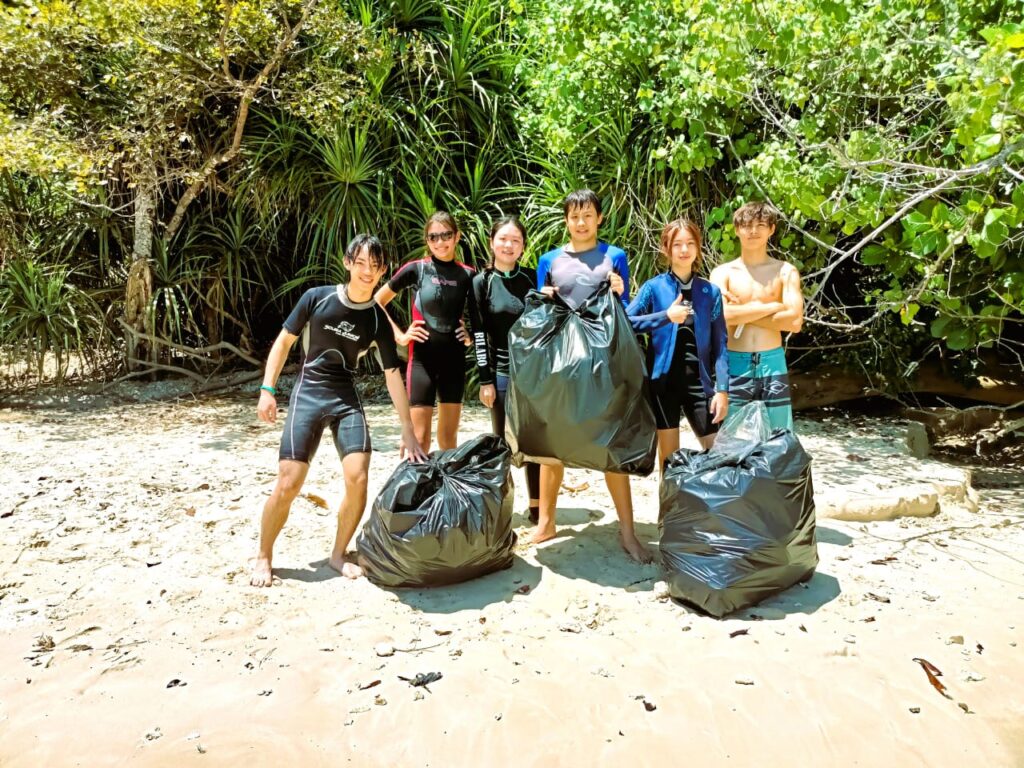
Work hard, play harder
Let’s not forget that Bubbles of Hope is a group of teen divers. And although it may sometimes sound like tedious work to remove trash, we actually have a lot of fun in the process; both under and above the water.
Once the diving part is done, there remains a group of young people who just want to keep the fun going. Give us a beach, a bit of sun and a beach ball, and we will make the best of it. Sand in my hair was all worth it after an epic battle of sand balls, as we all left with a huge smile on our faces. To me, there’s no better sight than to see youth reconnecting with nature, having fun, and bonding together – a luxury that we never take for granted.
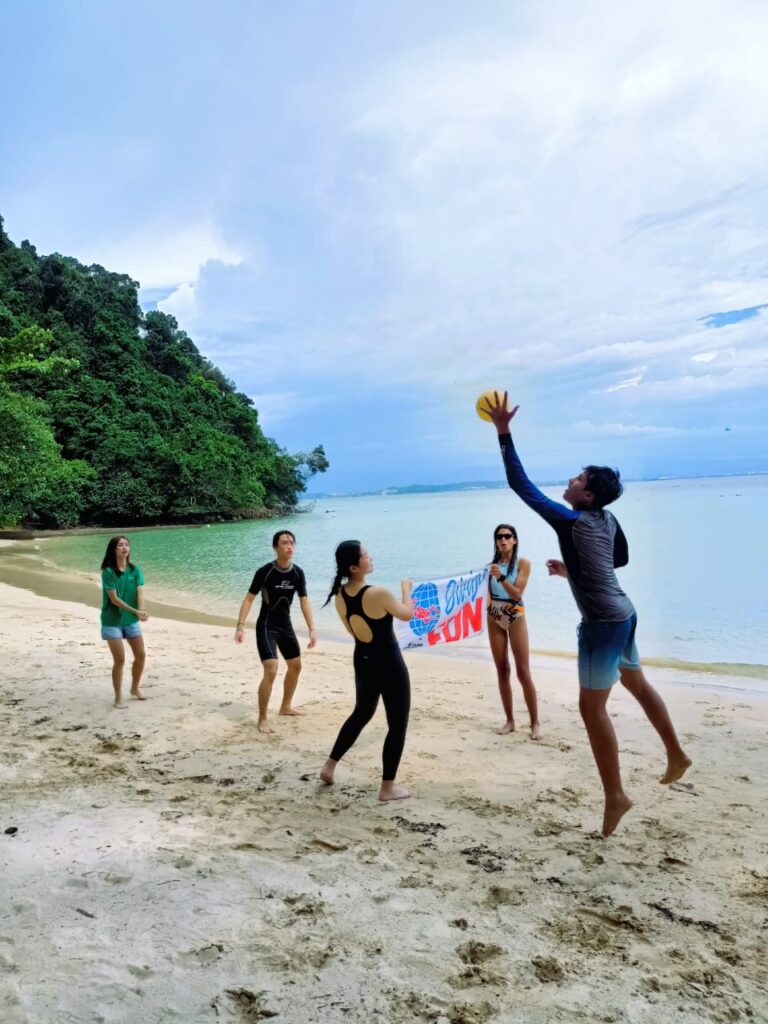
Overall, we may not have found so much trash underwater, but to me this trip was a success yet again. We still managed to do our part for the park and the fun that we had that day was a reminder of why we are protecting such an amazing place.
Bubbles of Hope #12 was a blast! Definitely looking forward the next one…
Julia Rabenjoro
Saturday 16th marked the 10th Bubbles of Hope reef cleanup done and a very special one for multiple reasons.
As usual, our day started at the Jesselton Point Jetty, heading off under the bright sunshine and blue skies. Our first dive site was Sulug House Reef where we immediately ran into ‘Bumpy’ the residential humpback hawksbill turtle. Shortly after, we emerged from the warm waters with a bag full of trash collected from the sandy bottom and headed to a small, secluded island for our surface interval.
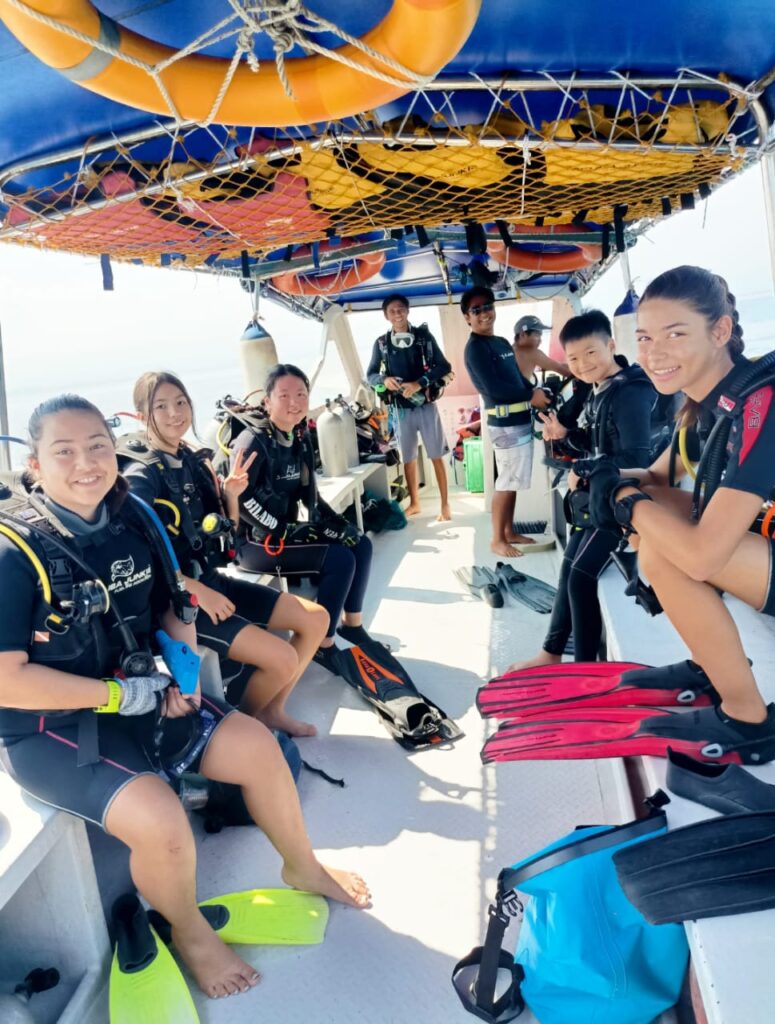
Normally, we would do a beach cleanup in this exact location, but today was a special day as it was the last time we would be diving with one of our divemasters/buddy, Awie, for a while. And so instead, we ate some cakes kindly brought in by Pik Yen, one of our teen divers.
It wasn’t long before we were heading off again to our fun dive yet again near Sulug Island. As we hurried to get into the tropical waters, no one expected what was to come…
The visibility was incredible – probably the best one I’ve seen in the park – and we excitedly roamed the top reef before coming to the slope where we followed a humongous school of bigeye snappers on our right shoulder. We continued along the edge, finding beautiful block corals, soft corals and an adorable, vibrant purple nudibranch.
Eventually, the visibility seemed to get a little foggy, and we headed back the way we came, running into our school of snapper friends again and taking many more pictures and videos. At last, in exactly the right location at the right time, a spotty shadow loomed towards us from the blue. The shape and pattern was undeniable: we had run into a whale shark mid-dive!
Squeals of joy, denial and disbelief bubbled to the surface as it looped around us slowly, yet efficiently, and we took as many pictures and videos as our cameras could hold. After it had faded away into the blue again, the magical feeling still lingered and each mask had wide eyed gazes.
Shortly after that, a chubby black tip reef shark came by just to make the dive even more incredible then it had already been, and we resurfaced in cheers and awe.
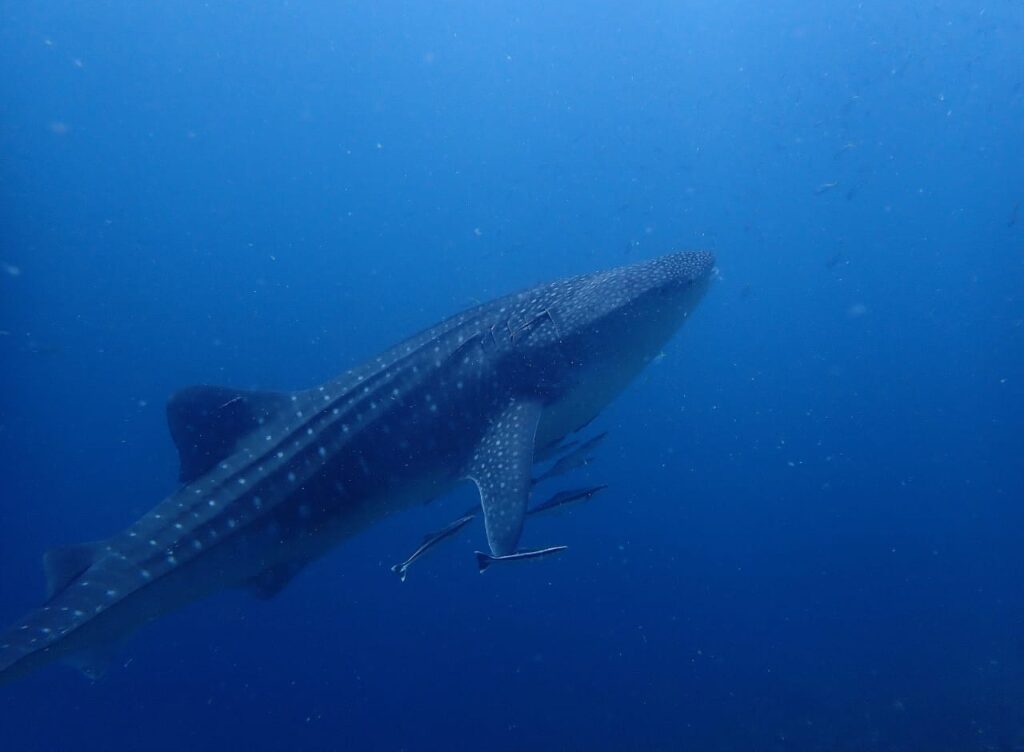
As we headed to lunch, there was no other topic of discussion but endless recounting of funny reactions and excitement as we rewatched the videos captured.
After lunch, logbooks were filled with drawings and bold titles of ‘WHALE SHARK!” and it was so amazing to think that for Isabella, one of the teen divers, this had been her very first encounter with one of these majestic creatures. And for Lung Ip who is only 11, this had been his second time in only 35 dives! A special dessert was the cake that I baked as a goodbye to Awie and each of the present members had signed it with a short message.
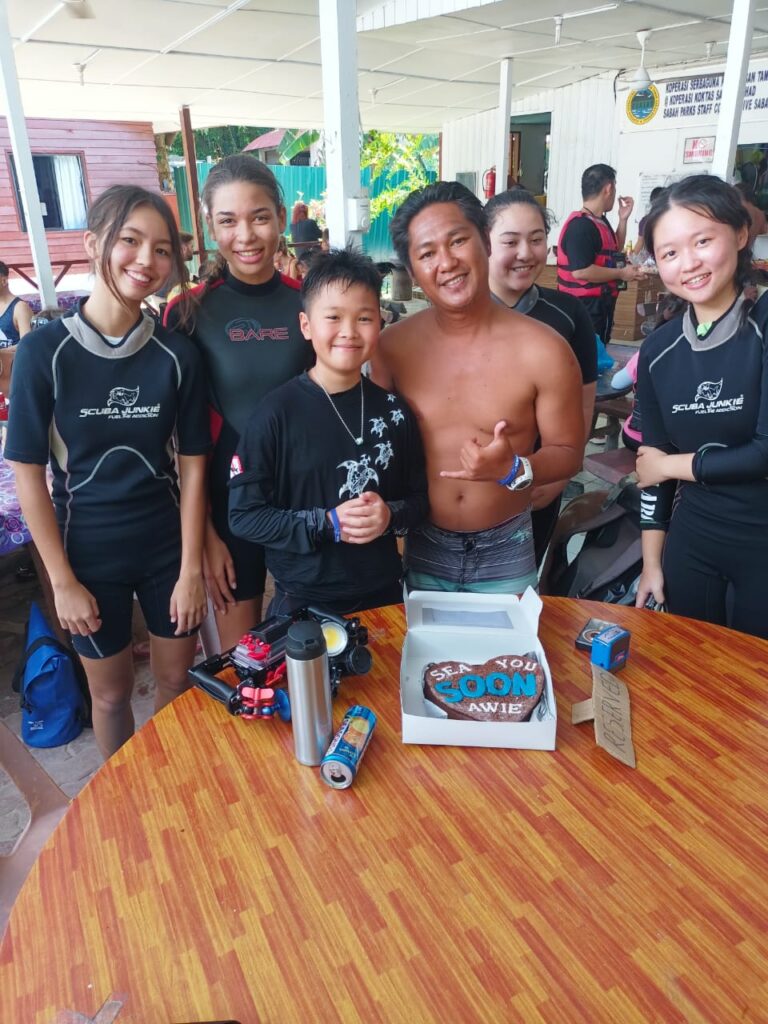
Nothing but happiness and stories returned to the shocked parents. This was an amazing reminder of what we are doing these cleanups for. It was a real-life (unexpected!) encounter with one of our rarest marine neighbours and it was just the most perfect way to send off Awie and to celebrate our 10th Bubbles of Hope dive trip!
I am very much looking forward to many more to come, and am more than ever motivated to help clean up our watery home.
Happy Bubbles!
Julia (Bubbles of Hope)
One of the most common things we teenagers hear from our parents is “Clean your room!” and “Pick up your stuff!” And let’s be honest, we suddenly have hearing problems and a million other priorities…
But when it comes to cleaning up underwater, it’s a different story. My name is Julia. I am a 15 year old PADI AmbassaDiver and a Junior Master Scuba Diver.
A few months ago I had the idea to gather young divers to dive with a purpose. After all, it’s never too early to start. After 7 years of scuba diving in the Tunku Abdul Rahman Park, seeing trash floating or stuck underwater and noticing more and more kids being certified, I thought: how cool would it be to join forces and do something good for the ocean!
I created a logo, found a great printer shop and Bubbles of Hope was born.
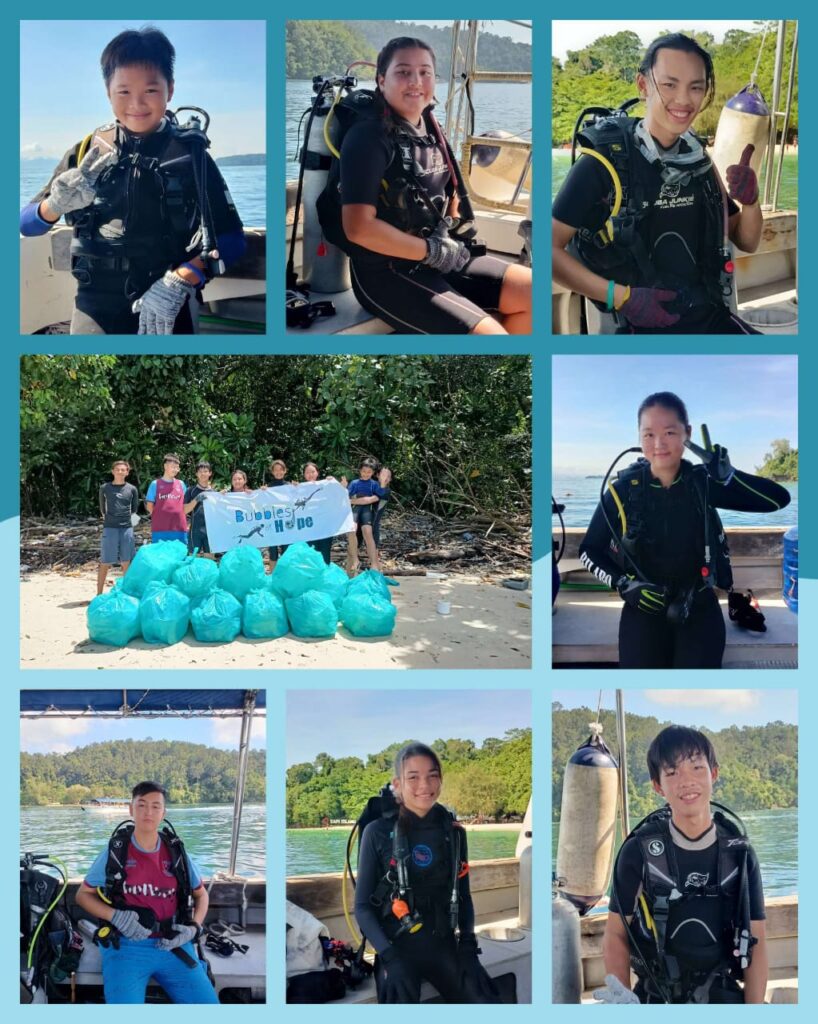
It’s not always easy to find the right day to accommodate everyone but also not impossible. Partnering with local dive centers is much easier and I am so grateful for that!
Scuba Junkie immediately accepted to jump on board and hosted our 6th reef cleanup last month.
There were 7 of us meeting up at Jesselton by 8am (yes, teens can wake up early during the weekend for a good cause!) and off we go, wearing our Bubbles of Hope t-shirts! Everyone is chatting and excited, the sun is shining brightly and with Awie and Jason, I know we are in good hands. Briefing, gearing up, mesh bags ready, one by one we are back rolling into Sapi House reef.
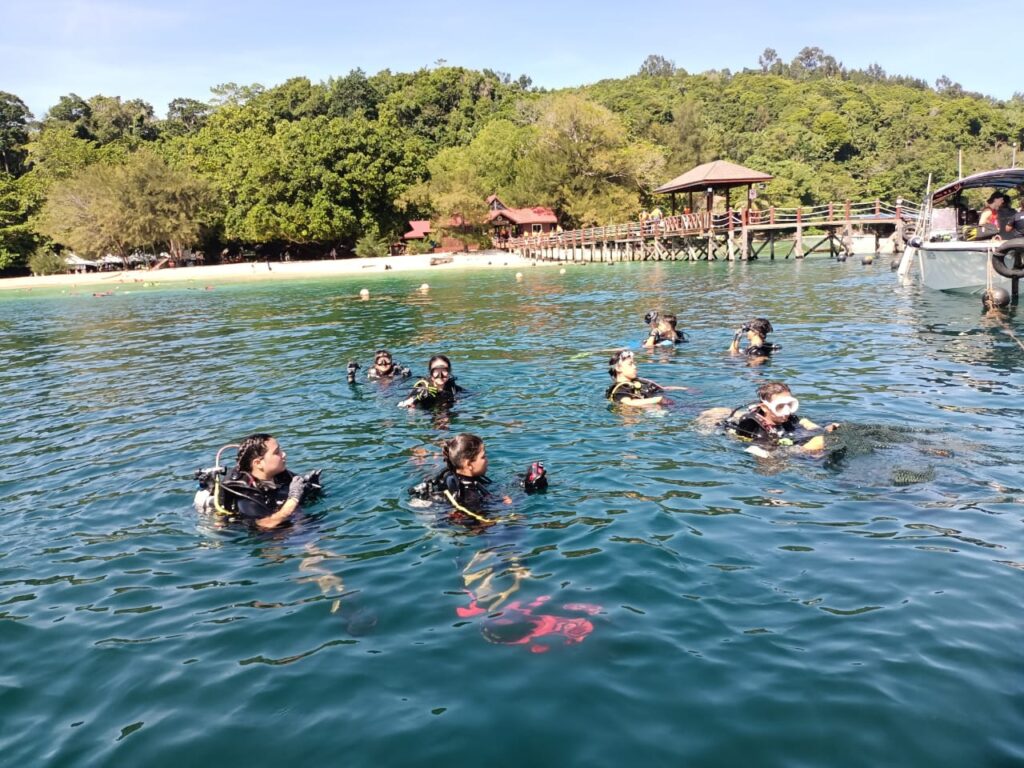
Split in 2 groups we worked together, keeping our buoyancy in control and helping each other out and had a pretty bitter-sweet outcome. Very sad to have seen so much trash but glad that we were able to get 3 and a half large mesh bags of rubbish out of there!
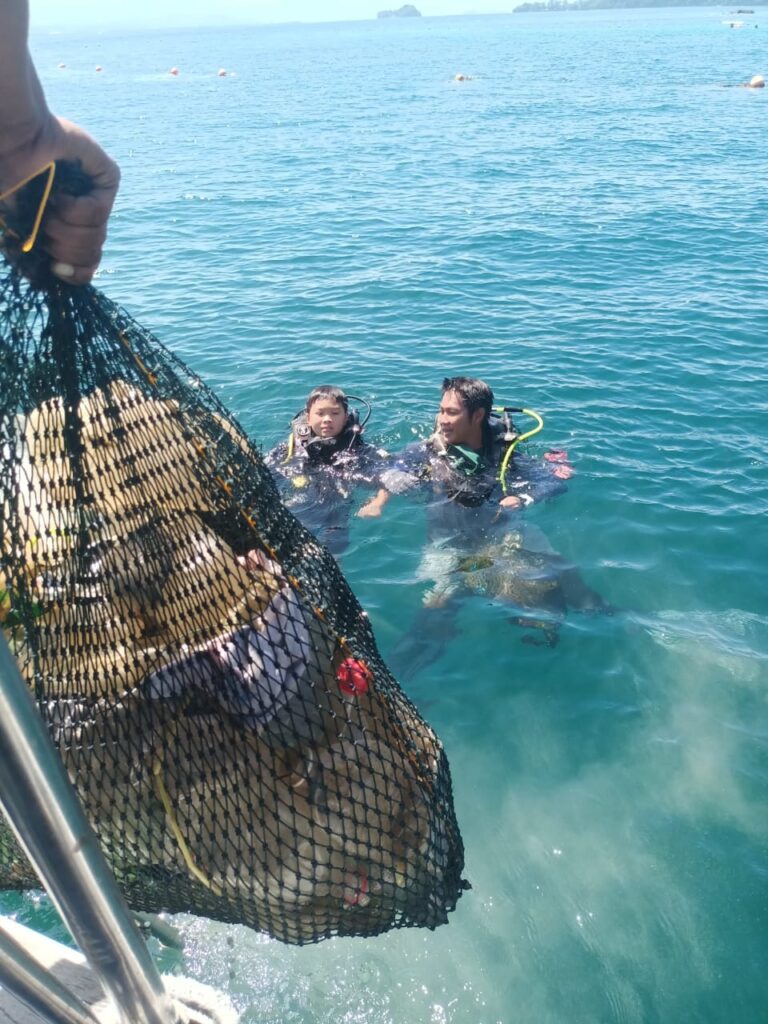
We used our surface interval to head to an occupied beach where we got to work on the mounds upon mounds of plastic bottles, food packagings and polystyrene that had washed up on the beach and in the vegetation. Led by our 2 dive masters we created an organized system to collect, crush and bag up as much trash as we could, and despite the time and limited workforce, we were able to get 16 bags of rubbish off that beach! We even had the unexpected help from a nice couple who were chilling with their own boat and were happy to give a hand. I hope the macaque who was watching us from afar appreciated our collective efforts. Of course, there was still a lot left so we’ll be back! Then we headed to Gaya Island, where we took a break from pollution to go on a fun dive and enjoy the beauty of the park we are working so hard to preserve! Cameras were out and lots of vibrant, colourful coral and fish were spotted.
Exhausted but satisfied with our work for the day, we headed to the other side of the island for a delicious, well deserved lunch followed by a peculiar competition of sand balls and leisure swims in the warm, tropical waters.
It was a very productive day and it’s so promising to see such interest and dedication reflected in this group.
So yes, we might not be the champions of cleaning our bedrooms but I can tell, we did a pretty good job with Scuba Junkie! And it’s just the beginning…
Please get involved! If you are/know any PADI certified teen divers (10-17 years old) who might be interested to join, don’t hesitate to contact me for more details on:
Instagram: @julia_into_the_blue
Facebook: Seed of Hope
Email: juliaintotheblue@gmail.com
If you aren’t a diver, then please show your support to our efforts by checking out the social media handles or spreading the word about this project. The more people we have, the bigger difference we can make!
I hope to see you underwater! Keep diving and happy bubbles! Julia
Blacktip reef sharks are frequently seen when diving in Kota Kinabalu, particularly around Gaya and Mamutik Islands within the KK marine park. They mostly prefer shallow, inshore waters where they feed upon small fish, squid, and crustaceans, which is great as divers don’t have to go too deep to see them and even snorkelers can get the magical experience to see them. The Blacktip reef shark is a docile and inquisitive shark species, so if you ever wanted to snorkel with sharks then this is a great opportunity!
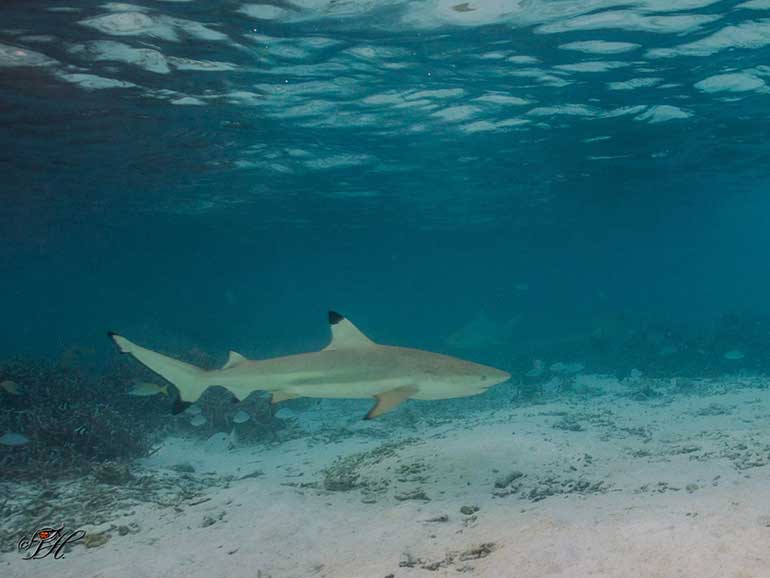
The Blacktip reef shark has a sleek grey-coloured body, rounded snout, horizontal eyes, and tell-tale attractive black tips on all of its fins. Despite their mouth full of serrated teeth, they are known to be docile and timid around humans, so there is nothing to worry about being around these guys!
Size-wise, the blacktip reef shark is a small to medium-sized shark. They can grow to be up to 2 meters long and weigh between 60 and 100kg.
Blacktip reef sharks can live for more than ten years and reach maturity at the age of four to five years.
While most sharks are solo hunters, blacktip reef sharks are often seen traveling in small groups which is helpful for more effective results hunting their prey. Their diet consists of fish, which are abundant around the coral reefs, crustaceans and have even been seen hunting rays! They are extremely fast and skilled predators which normally hunt at night.
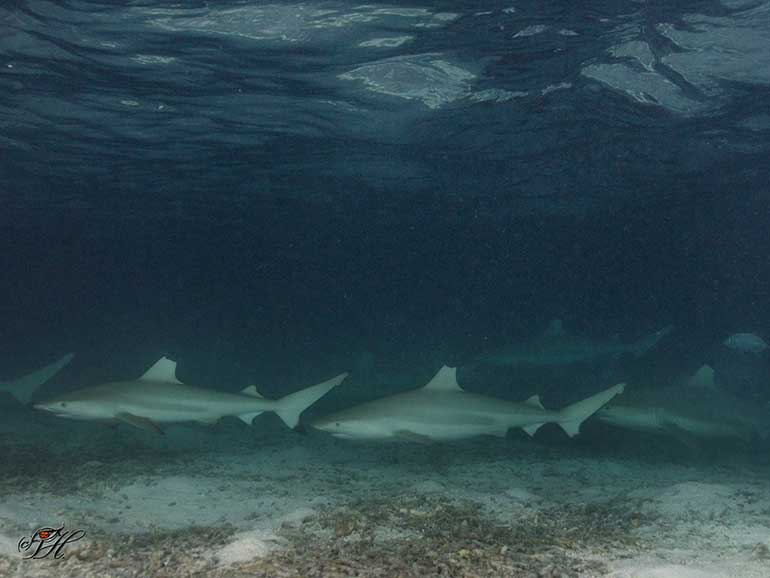
Blacktip reef sharks are viviparous sharks, which means they give birth to live pups instead of eggs. Their gestation period is believed to be around 10-12 months, giving birth to an average of four or five pups per litter. Courtship involves one or more males trailing closely behind a female. Reproductive behavior consists of distinct pairing with an embrace, in which the male grasps the female’s pectoral fin between his teeth and mates belly to belly. Females rest for 8-14 months between pregnancies to rebuild their energy stores.
They can be found all across the world’s oceans. They prefer shallow waters to deep oceans, and can frequently be seen at depths of less than one metre. The preferred habitat for blacktip reef sharks is around coral reefs with clean and warm water, as well as nooks and crannies to hide in. They are quite often seen hanging out in groups.
The blacktip reef shark offers a wonderful opportunity to get up close to safe sharks, they are a very peaceful, non-aggressive species. So leave your fears at home, pack your gear, and jump in to get to know this beautiful shark species here in Kota Kinabalu.
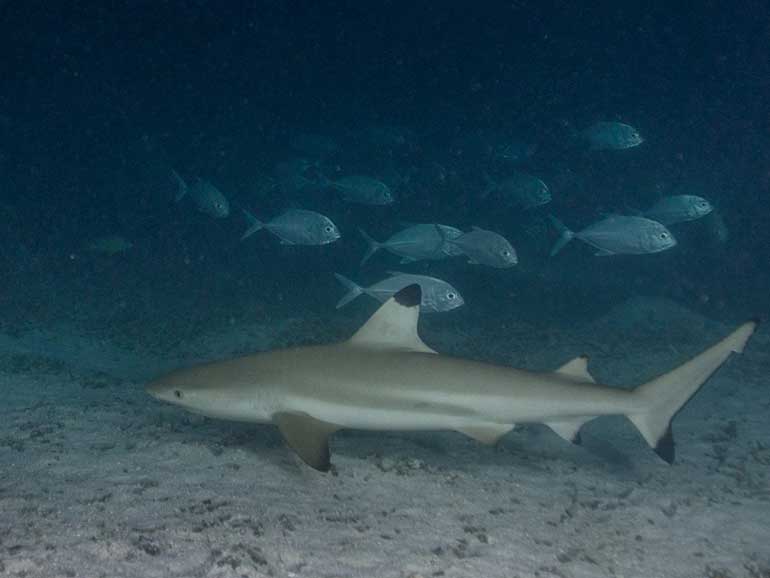
Kota Kinabalu is a perfect dive location for those who love macro! The diving here is very easy & you won’t need to go too deep to search different species of macro. Have you ever wondered what macro critters we have here? We have listed down 5 fascinating macro critters you can find diving off Kota Kinabalu.
Frogfish can be found when diving at the Tunku Abdul Rahman Park. They are considered one of the strangest looking fish in the water, however, they are also a master in hiding underwater. They camouflage themselves very well & are very good at adapting to their surroundings. They are able to hide from predators using their amazing disguise ability. Frogfish come in different shapes, colours & skin textures according to the surrounding environments that they live in. Some even resemble the coral or rock so very much that you won’t be able to tell the difference! Their amazing chameleon-like camouflage ability is useful when it comes to hunting. The potential prey like small fish will just swim past them without noticing the well-hidden frogfish until it’s too late.
As for divers, you will need to have a pair of eagle eyes to spot them! Having a dive guide who is familiar with the surrounding sea condition will come in handy in this situation. It is definitely a treat to be able to see frogfish underwater. The colour of frogfish can be varied throughout their lifecycle. Frogfish have contrasting colour, together with their weird-looking face, it makes them one of the popular photography subject for divers.
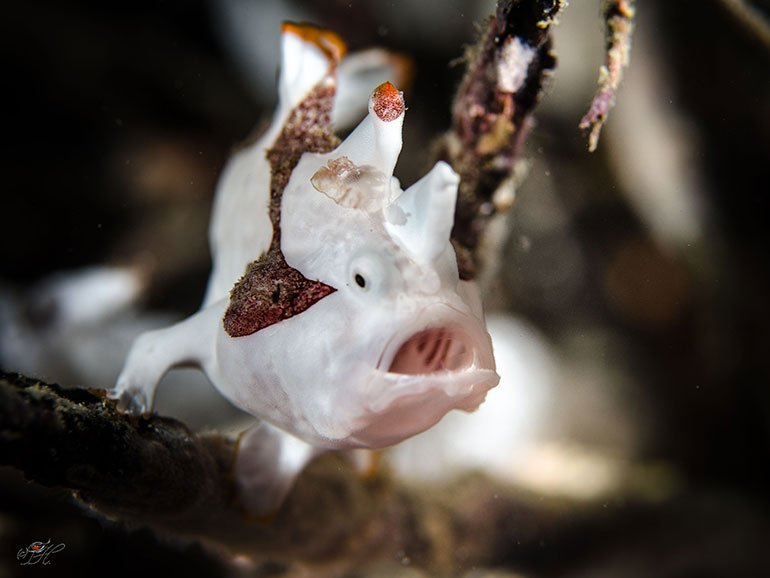
Blue-ringed octopus are small in size, however, they are definitely not as harmless as they look! This tiny creature can even fit into the palm of a human hand, but the venom that they carry is enough to kill a human and until now, there is no antidote for it. It is considered one of the most dangerous animals in the ocean. The blue-ringed octopus gets its name from the bright blue rings that appear when they are threatened.
Although the blue-ringed octopus is venomous, there have been very few reports of divers being bitten by them. They are usually hidden away in the morning and awake at night. It is perfectly safe to dive with them as long as you don’t go and provoke them. We often find them hidden among coral reefs, small stones & sandy bottoms.
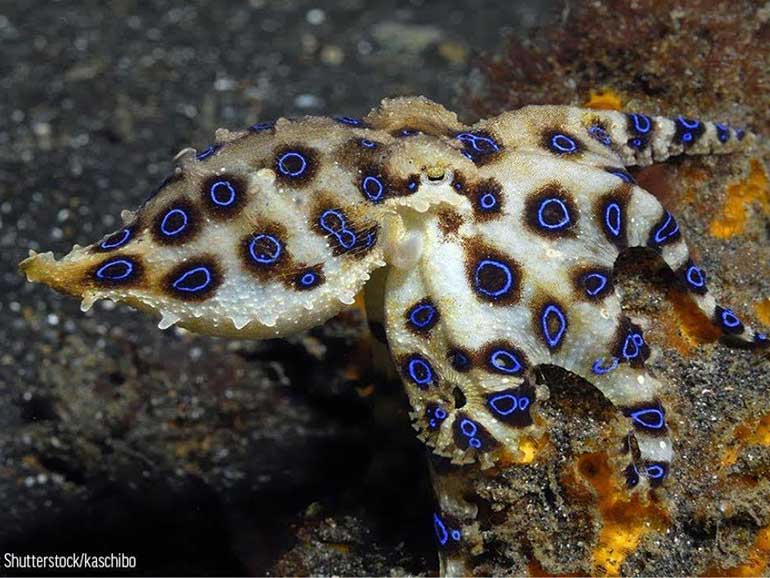
The islands around Kota Kinabalu city are definitely some of the best spots for those who are nudibranch lovers! We can find many different types of nudibranch when diving around here.
Nudibranchs are one of the most sought-after subjects for underwater photography. This is because nudibranchs have very vibrant colours and come in different unique shapes. They move very slowly through the water however you often see them stationary, so divers have more time to photograph their beautiful side from the best angle. There are even some divers who head out to dive especially to find nudibranchs so that they can take pictures of them, and add into their collection!
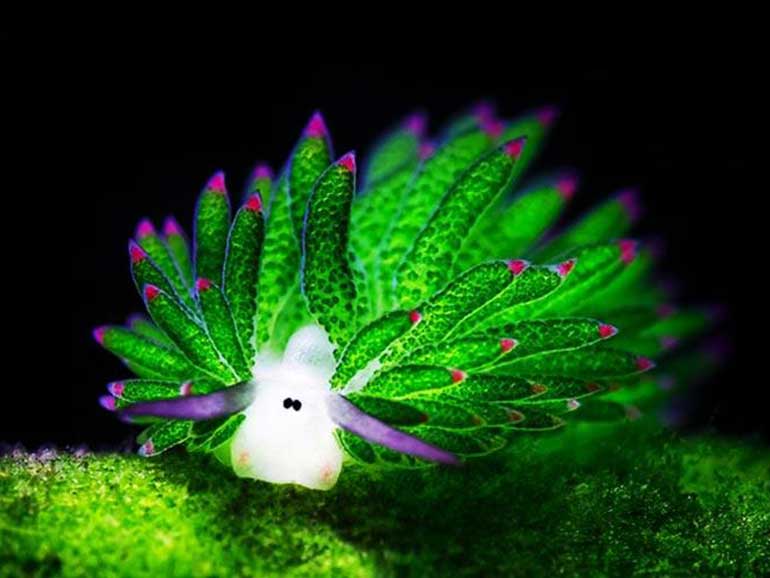
When it comes to what creature is the hardest to spot, the seahorse is surely on the list! The types of seahorse that we find here are generally very tiny. Spotting a seahorse is like playing a searching game underwater. Seahorses live in shallow areas and often in seagrass beds.
Seahorses have a very unique appearance, they have a horselike head, prehensile tail, independently moving eyes, and brood pouch. As they are not very good swimmers, divers are still able to get that perfect shot of them even when they are super small.
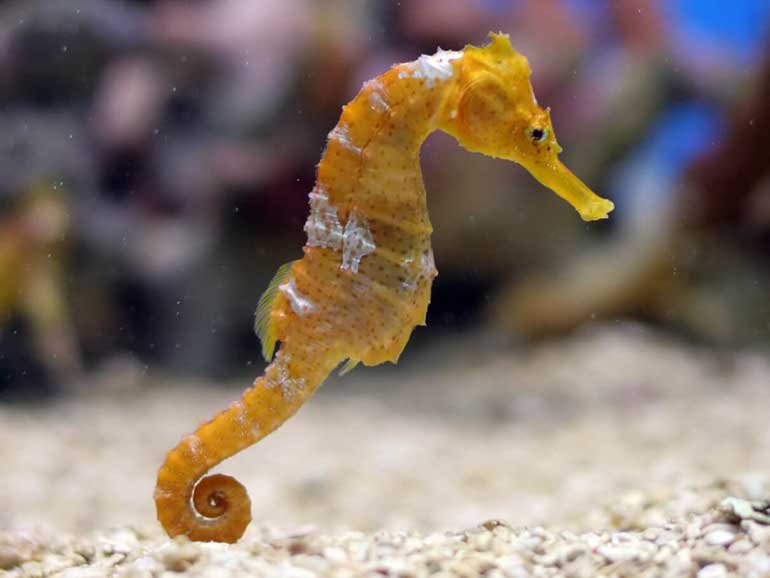
The cuttlefish is another macro critter that you can see when diving at Kota Kinabalu. Cuttlefish will release a cloud of ink when they feel threatened, which gives them some time to escape. Besides, cuttlefish is another king of camouflage. They often bury themselves into the sandy bottom, leaving only their eyes exposed. Other than that, cuttlefish can change colour too according to their surroundings, which makes it harder for us to find it! You can easily miss them if you are not being cautious. But no worries, our expert dive guides will show you exactly where to find them when you are diving with us.
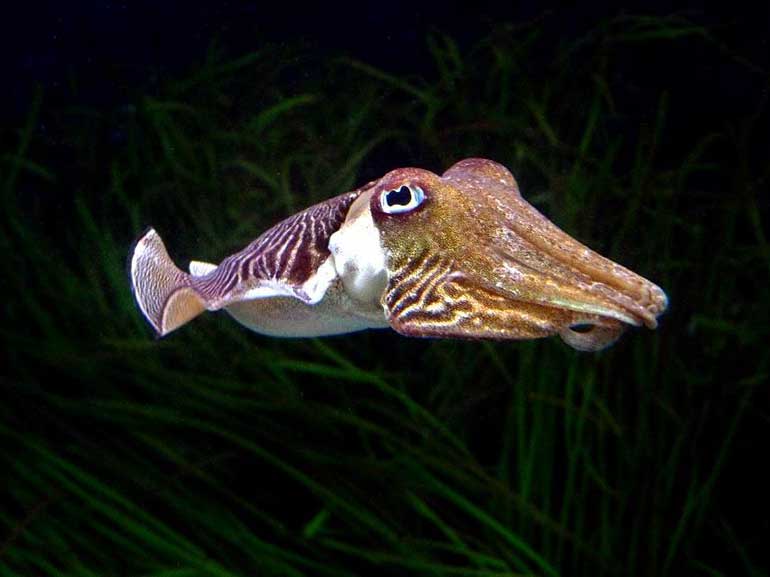
Do you want to explore the macro diving around Kota Kinabalu? Contact us today!
Did you know Whale Sharks are the largest fish on the planet? And are in no way related to whales. Although they are sharks, they are very docile and pose no real threats to humans.
Whale sharks can grow to be up to 12 meters long and can weigh up to 20 tons (the size of a bus!!), making them the world’s largest fish. Despite their size, they are very docile creatures that are completely harmless to divers. They only eat plankton and small fish that are filtered from the ocean by their large mouths, which are located on the front of the head rather than the underside, as opposed to the underside of most shark species.
Although little is known about this massive creature, whale sharks are thought to live to be over 100 years old, reaching maturity at around 30 years. They are thought to have a rapid growth rate when young, which then slows down, taking them a long time to mature and increasing the vulnerability of this iconic species.
Do you want to learn some more interesting facts about these beautiful gentle giants? Have a look at this excellent whale shark article from Dive The World!
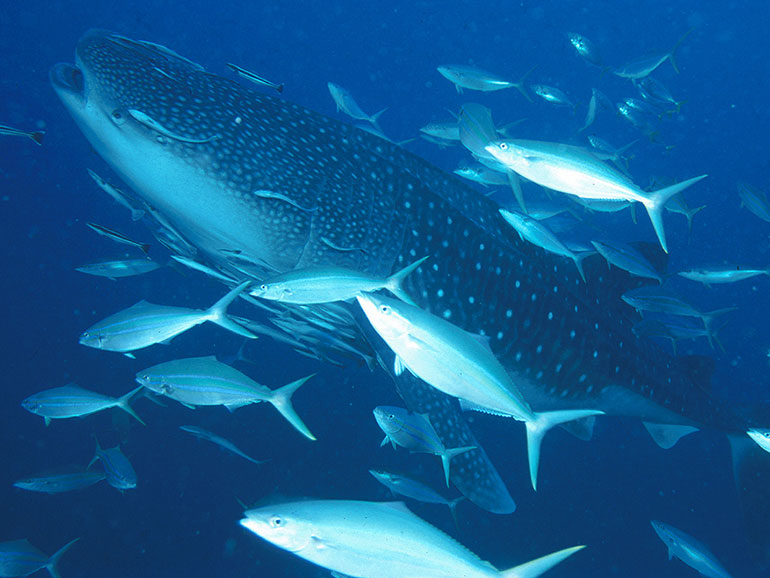
This is a very common question & the easiest answer is in the water! Of course there is an element of luck you have to be in the right place at the right time, however if they are around you will find them within the Tunku Abdul Rahman marine park.
There have been lucky student divers in the past that have been able to see these amazing creatures while taking their PADI Open Water course. Can you imagine seeing one of your first Open water dive? What an experience!
There can be no guarantee of seeing a whale shark as when you are diving in the ocean it is such a vast space. I read somewhere that diving is like going on safari, not like going to the zoo, which is quite realistic. However, the more you dive the better chance you have of seeing this magical creature!
Don’t worry though, if you don’t manage to spot one there are still plenty of amazing things to see such as Eagle rays, school of Barracuda, Snappers, Turtles, Black Tip reef sharks & much much more!
The million-dollar question! Of course nature is quite random but it is typically March- April time in Kota Kinabalu when we gain large plankton blooms which draw in the Whale Sharks in.
Whale sharks have sensory cells in the nasal grooves above the mouth, and these help the whale shark detect food in the water. It has been suggested that whale shark movement patterns are linked with coral spawning and plankton blooms.
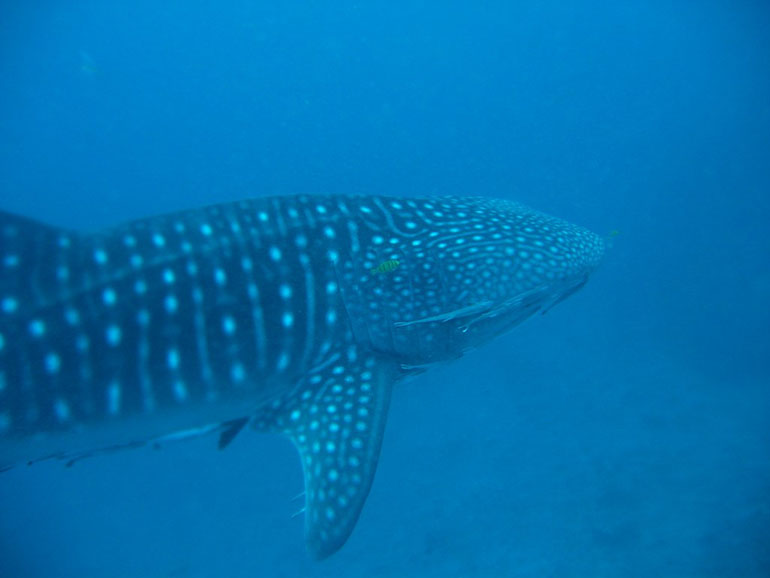
It is important to remember that sharing water with these amazing creatures is a once-in-a-lifetime experience that most people check off their bucket list. However, it is critical that we understand the do’s and don’ts of our behaviour around them, and that we treat these creatures with the utmost respect.
Scuba Junkie adheres to standards & guidelines to ensure we do not endanger, harm or harass the animal. This also means divers can make the most of their whale shark encounter.
We hope you will join us in trying to spot these beautiful animals! Don’t forget nature can change their mind & we can have random visits at other times in the year too! If you are not looking it might just pop up and surprise you!
Here in Kota Kinabalu we have a wide range of dive sites & among them you can also find lots of macro. The term macro means large in scale & is a term used in relation to small creatures because photographers use macro lenses to allow them to take big close up images of the minuscule animals. Marco is now used widly in the diving community for dives that do not focus on the big stuff.
Experienced photographers come seeking smaller inhabitants of the reefs around Kota Kinabalu.
The underwater world really got into the festive spirit this year, providing us with a wealth of gifts in small and colourful packages. Our staff and guests have spotted some incredible critters in the past month.
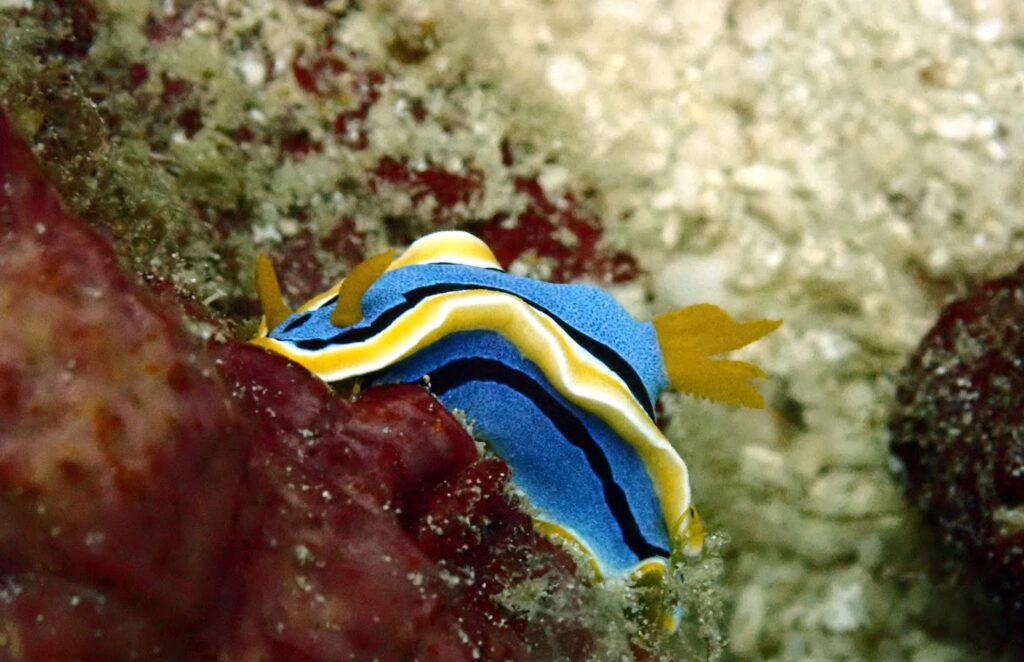
A patient search & the help of our eagle eyed dive guides and you will find some amazing reef dwellers! Among them could be Nudibranchs, shrimps, crabs, pipefish, frogfish, stonefish & so much more! Slow moving marine life has a huge attraction for photographers, allowing for plenty of time to perfect that shot!
Nudibranchs hold a special appeal due to the large number of different species, colours, patterns and their inability to go anywhere in a hurry!
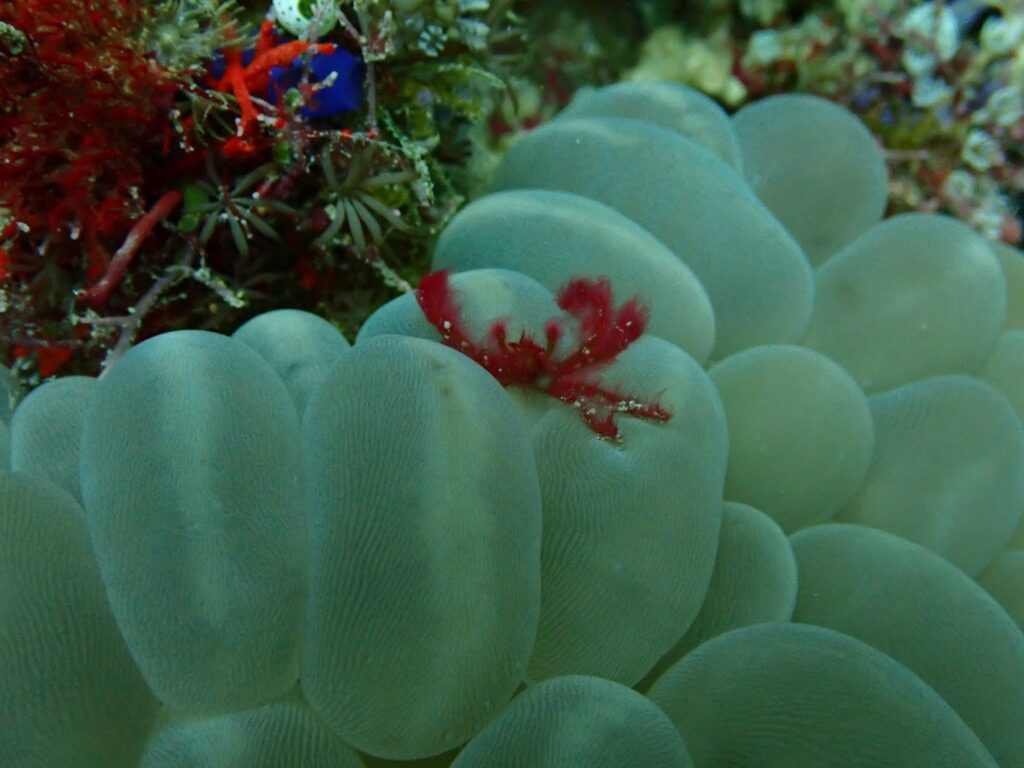
One of my favourites & apt for Borneo, these tiny cute Orangutan crabs are often found on bubble coral, there carapace is so small & has extra long arms compared to its body. It has red/orange fluffy hair, the crab just chills around waiting for plankton to get stuck in its luscious locks & then uses its claws to groom & pick it out for a snack for the day!